SEAT Arona vs Suzuki Vitara - Differences and prices compared
Costs and Efficiency:
Price and efficiency are key factors when choosing a car – and this is often where the real differences emerge.
SEAT Arona has a noticeable advantage in terms of price – it starts at 19300 £, while the Suzuki Vitara costs 23600 £. That’s a price difference of around 4269 £.
Fuel consumption also shows a difference: Suzuki Vitara manages with 5 L and is therefore barely noticeable more efficient than the SEAT Arona with 5.40 L. The difference is about 0.40 L per 100 km.
Engine and Performance:
Under the bonnet, it becomes clear which model is tuned for sportiness and which one takes the lead when you hit the accelerator.
When it comes to engine power, the SEAT Arona has a a bit edge – offering 150 HP compared to 129 HP. That’s roughly 21 HP more horsepower.
In acceleration from 0 to 100 km/h, the SEAT Arona is somewhat quicker – completing the sprint in 8.40 s, while the Suzuki Vitara takes 9.50 s. That’s about 1.10 s faster.
In terms of top speed, the SEAT Arona performs minimal better – reaching 210 km/h, while the Suzuki Vitara tops out at 190 km/h. The difference is around 20 km/h.
There’s also a difference in torque: SEAT Arona pulls hardly perceptible stronger with 250 Nm compared to 235 Nm. That’s about 15 Nm difference.
Space and Everyday Use:
Cabin size, boot volume and payload all play a role in everyday practicality. Here, comfort and flexibility make the difference.
Seats: offers more seating capacity – vs .
In curb weight, SEAT Arona is slight lighter – 1188 kg compared to 1255 kg. The difference is around 67 kg.
In terms of boot space, the SEAT Arona offers hardly perceptible more room – 400 L compared to 375 L. That’s a difference of about 25 L.
In maximum load capacity, the SEAT Arona performs a bit better – up to 1280 L, which is about 160 L more than the Suzuki Vitara.
When it comes to payload, SEAT Arona clearly perceptible takes the win – 522 kg compared to 400 kg. That’s a difference of about 122 kg.
Who comes out on top?
Overall, the SEAT Arona shows itself to be outperforms in nearly all aspects and secures the title of DriveDuel Champion.
It convinces with the more balanced overall package and proves to be the more versatile choice for everyday use.
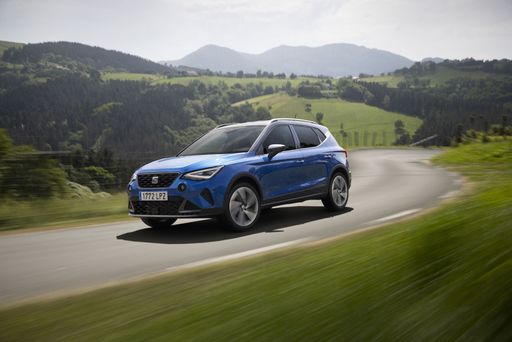 @ SEAT S.A. / SEAT Media Center
@ SEAT S.A. / SEAT Media Center
SEAT Arona
Costs and Consumption
View detailed analysis
Engine and Performance
View detailed analysis
Dimensions and Body
View detailed analysis
SEAT Arona
The SEAT Arona is a cheeky urban crossover that mixes sharp styling with sensible practicality, making it an appealing choice for buyers who want personality without fuss. It’s zippy in traffic, comfortable enough for daily driving, and brings enough character to make routine journeys feel a little more fun.
details @ SEAT S.A. / SEAT Media Center
@ SEAT S.A. / SEAT Media Center
 @ SEAT S.A. / SEAT Media Center
@ SEAT S.A. / SEAT Media Center
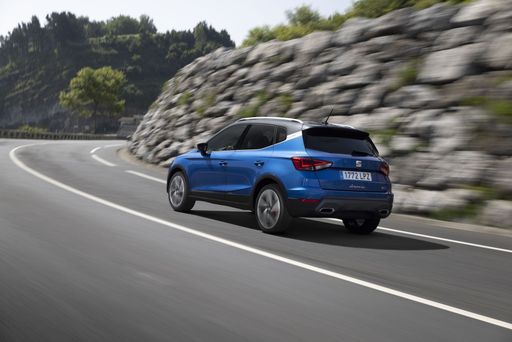 @ SEAT S.A. / SEAT Media Center
@ SEAT S.A. / SEAT Media Center
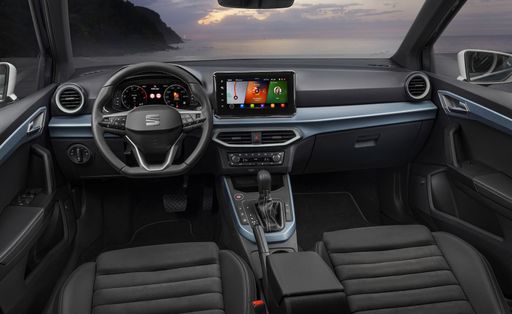 @ SEAT S.A. / SEAT Media Center
@ SEAT S.A. / SEAT Media Center
Suzuki Vitara
The Vitara is a city-smart SUV with a cheeky streak of off-road promise, perfect for drivers who want practicality without pretense. It’s honest, easy to live with and surprisingly likeable, a sensible companion for everyday adventures and weekend escapes.
details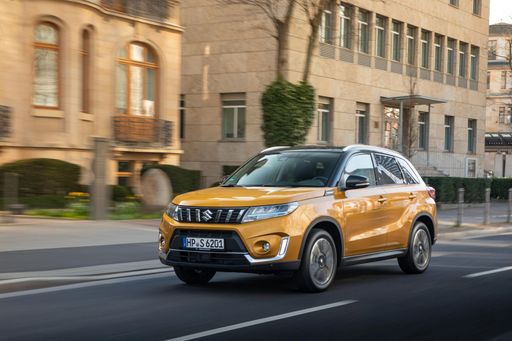 @ Suzuki Motor Corporation
@ Suzuki Motor Corporation
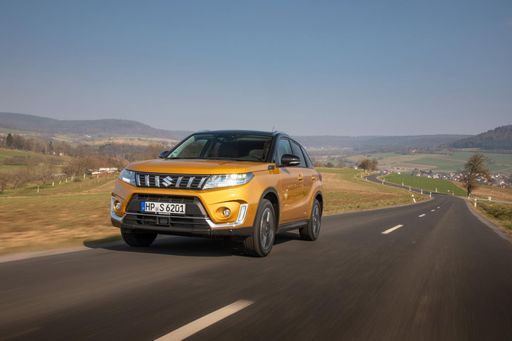 @ Suzuki Motor Corporation
@ Suzuki Motor Corporation
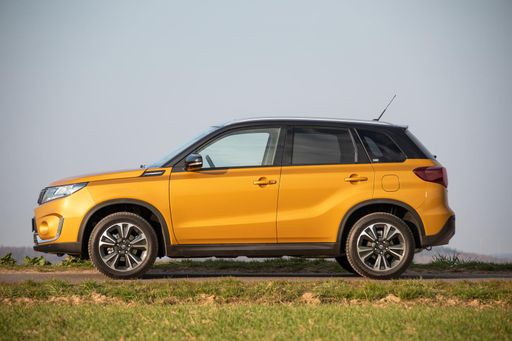 @ Suzuki Motor Corporation
@ Suzuki Motor Corporation
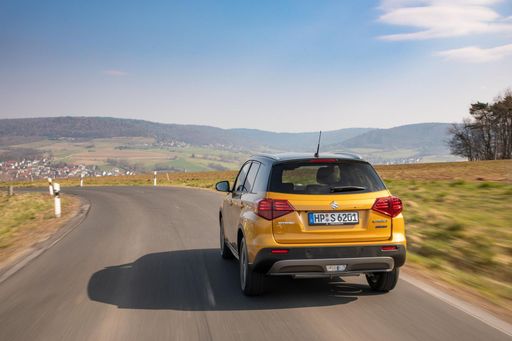 @ Suzuki Motor Corporation
@ Suzuki Motor Corporation
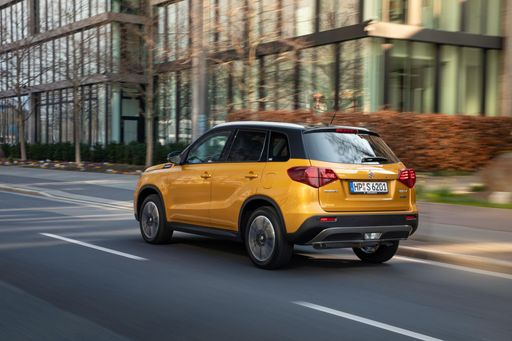 @ Suzuki Motor Corporation
@ Suzuki Motor Corporation
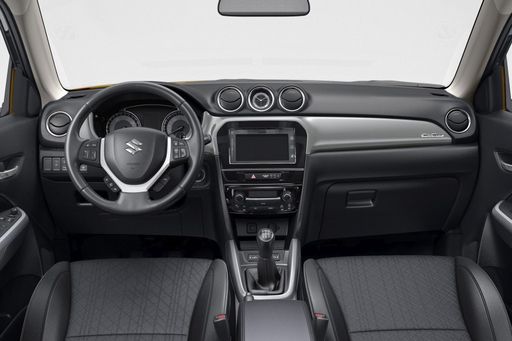 @ Suzuki Motor Corporation
@ Suzuki Motor Corporation
 @ SEAT S.A. / SEAT Media Center
@ SEAT S.A. / SEAT Media Center
|
 @ Suzuki Motor Corporation
@ Suzuki Motor Corporation
|
|
|
|
Costs and Consumption |
|
|---|---|
|
Price
19300 - 29300 £
|
Price
23600 - 30900 £
|
|
Consumption L/100km
5.4 - 5.6 L
|
Consumption L/100km
5 - 5.9 L
|
|
Consumption kWh/100km
-
|
Consumption kWh/100km
-
|
|
Electric Range
-
|
Electric Range
-
|
|
Battery Capacity
-
|
Battery Capacity
-
|
|
co2
122 - 128 g/km
|
co2
113 - 138 g/km
|
|
Fuel tank capacity
40 L
|
Fuel tank capacity
47 L
|
Dimensions and Body |
|
|---|---|
|
Body Type
SUV
|
Body Type
SUV
|
|
Seats
5
|
Seats
5
|
|
Doors
5
|
Doors
5
|
|
Curb weight
1188 - 1268 kg
|
Curb weight
1255 - 1395 kg
|
|
Trunk capacity
400 L
|
Trunk capacity
289 - 375 L
|
|
Length
4153 mm
|
Length
4185 mm
|
|
Width
1780 mm
|
Width
1775 mm
|
|
Height
1537 mm
|
Height
1595 mm
|
|
Max trunk capacity
1280 L
|
Max trunk capacity
1046 - 1120 L
|
|
Payload
502 - 522 kg
|
Payload
375 - 400 kg
|
Engine and Performance |
|
|---|---|
|
Engine Type
Petrol
|
Engine Type
Petrol MHEV, Full Hybrid
|
|
Transmission
Manuel, Automatic
|
Transmission
Manuel, Automatic
|
|
Transmission Detail
Manual Gearbox, Dual-Clutch Automatic
|
Transmission Detail
Manual Gearbox, Automated Manual, Automatic Gearbox
|
|
Drive Type
Front-Wheel Drive
|
Drive Type
Front-Wheel Drive, All-Wheel Drive
|
|
Power HP
95 - 150 HP
|
Power HP
110 - 129 HP
|
|
Acceleration 0-100km/h
8.4 - 11.3 s
|
Acceleration 0-100km/h
9.5 - 12.7 s
|
|
Max Speed
182 - 210 km/h
|
Max Speed
180 - 190 km/h
|
|
Torque
175 - 250 Nm
|
Torque
235 Nm
|
|
Number of Cylinders
3 - 4
|
Number of Cylinders
4
|
|
Power kW
70 - 110 kW
|
Power kW
81 - 95 kW
|
|
Engine capacity
999 - 1498 cm3
|
Engine capacity
1373 - 1462 cm3
|
General |
|
|---|---|
|
Model Year
2025
|
Model Year
2024 - 2025
|
|
CO2 Efficiency Class
D
|
CO2 Efficiency Class
D, C, E
|
|
Brand
SEAT
|
Brand
Suzuki
|
Is the SEAT Arona offered with different drivetrains?
Available configurations include Front-Wheel Drive.
The prices and data displayed are estimates based on German list prices and may vary by country. This information is not legally binding.
